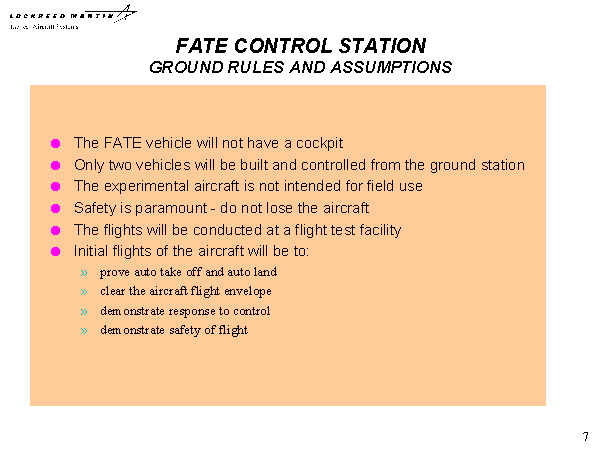Slide 7 of 28
Notes:
GROUND RULES AND ASSUMPTIONS (Page 1)
The ground rules and assumptions were also the result of the brainstorming sessions and the weekly teleconferences with Wright Labs. These will continue to evolve, but at this point, they are what was used to generate requirements. The “no cockpit” assumption answers questions about the need for redundancy and generally drives the whole design philosophy such as a wired remote panel to start the engine. The two vehicle assumption came from the two aircraft build given as program definition. However, at the briefing this was changed to “multiple” aircraft. This meets the vision that several manned aircraft may be UCAV surrogates along with the uninhabited aircraft which will be controlled from this station . “Not intended for field use” relaxed the need to make it “idiot” proof to fit within an operational environment. We can assume knowledgeable operators. Safety was presented as “the UCAV is a golden bullet; don’t lose it”. Loss of the aircraft would probably terminate the program. Therefore, design it to minimize the chance of losing the aircraft. Conducting flights at a flight test facility means that flight test telemetry will be available, along with independent tracking data, safe passage, controlled airspace etc.. The assumption is that this first phase of the program is to mature a test article, the aircraft and the support structure, that would be ready to begin UCAV experiments. This is assumed to mean an aircraft that can take off, navigate around, exercise the flight envelope and land. With these basics accomplished, new technologies can proceed. Key elements in operating the vehicle safely, and with positive control of the flight at all times.















